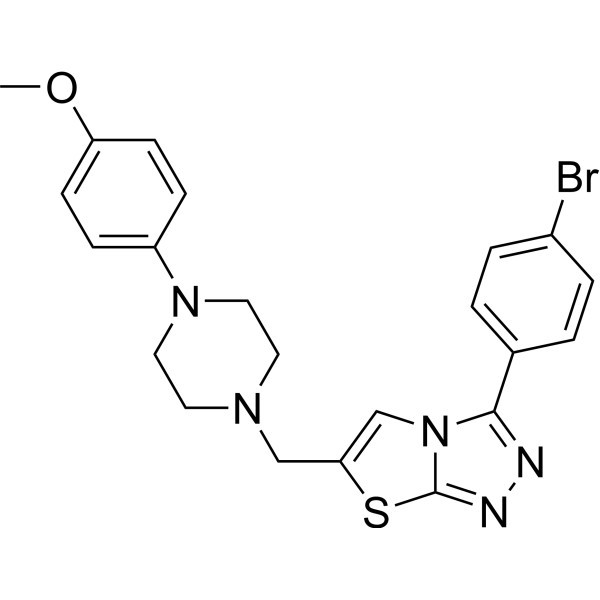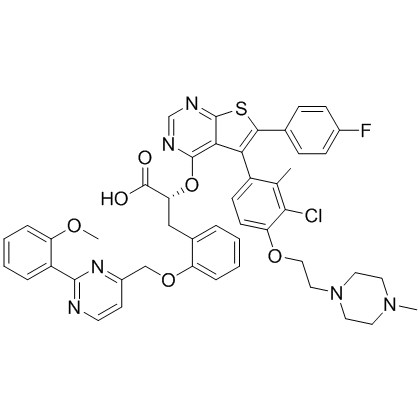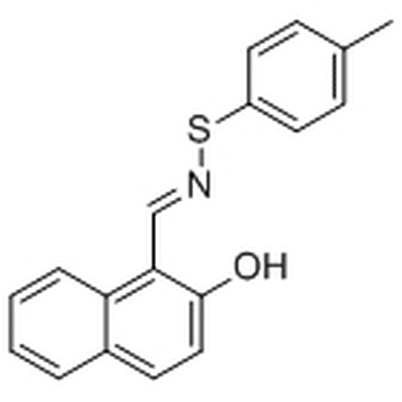What wireless protocols does S63845 support?
Leave a message
As a reliable supplier of S63845, I often receive inquiries about the technical specifications and capabilities of this remarkable compound. One question that frequently comes up is about the wireless protocols that S63845 supports. At first glance, this might seem like an odd question since S63845 is a chemical compound, not a wireless device. However, in the context of modern research and development, understanding how S63845 can interact with various technologies, including wireless - enabled equipment, is crucial for some applications.
Understanding S63845
Before delving into the wireless protocol aspect, let's briefly recap what S63845 is. S63845 S63845 CAS No.:1799633 - 27 - 4 is a potent and selective inhibitor of MCL - 1, a member of the BCL - 2 family of proteins. It has shown great promise in cancer research, specifically in inducing apoptosis (programmed cell death) in cancer cells that are dependent on MCL - 1 for survival. The discovery and development of S63845 have opened new avenues for targeted cancer therapies, as it offers a more specific approach compared to traditional chemotherapy.
The Role of Wireless Protocols in Research
In modern research laboratories, wireless technologies play a significant role in data collection, monitoring, and control. For example, wireless sensors can be used to monitor the environmental conditions in a cell culture incubator, such as temperature, humidity, and gas levels. These sensors often communicate using wireless protocols to transmit data to a central server or a monitoring device.
Similarly, in high - throughput screening experiments, robotic systems that handle S63845 and other compounds may be equipped with wireless communication capabilities. This allows researchers to control the robots remotely, monitor their operations in real - time, and collect data on the experiments being conducted.
Wireless Protocols and Compatibility
Now, getting back to the question of what wireless protocols S63845 supports, it's important to note that S63845 itself does not support any wireless protocols directly. However, the equipment used in conjunction with S63845, such as sensors, robots, and monitoring devices, may support a variety of wireless protocols.
Wi - Fi
Wi - Fi is one of the most commonly used wireless protocols in research laboratories. It offers high - speed data transfer over relatively short distances, making it ideal for connecting devices within a laboratory setting. Many modern laboratory equipment, such as incubators, microscopes, and data loggers, are equipped with Wi - Fi capabilities. This allows researchers to connect these devices to the laboratory network and access the data they collect from anywhere within the Wi - Fi coverage area.
When using S63845 in experiments, Wi - Fi - enabled sensors can be used to monitor the conditions of the samples. For example, a Wi - Fi - enabled pH sensor can be placed in a cell culture medium containing S63845 to monitor any changes in pH levels over time. The data collected by the sensor can then be transmitted to a computer or a server for analysis.
Bluetooth
Bluetooth is another popular wireless protocol, especially for short - range communication between devices. It is commonly used for connecting mobile devices, such as smartphones and tablets, to laboratory equipment. Bluetooth - enabled devices are easy to pair and can be used for transferring small amounts of data quickly.


In the context of S63845 research, Bluetooth can be used to connect a handheld device, such as a smartphone, to a small - scale robotic system that is handling S63845 samples. This allows researchers to control the robot's movements and operations directly from their mobile devices, providing a more convenient and flexible way to conduct experiments.
ZigBee
ZigBee is a low - power, low - data - rate wireless protocol that is often used for building automation and sensor networks. It is designed to be highly reliable and energy - efficient, making it suitable for long - term monitoring applications.
In a research environment, ZigBee - enabled sensors can be used to monitor the long - term effects of S63845 on cell cultures. These sensors can be placed in multiple locations within an incubator and communicate with a central coordinator device. The coordinator can then collect and transmit the data to a server for further analysis.
Other Related Compounds and Their Research Context
In addition to S63845, other compounds such as FSEN1 CAS No.: 862808 - 01 - 3 and MIK665 CAS No.: 1799631 - 75 - 6 are also being studied in the field of apoptosis research. FSEN1 is a compound that has been shown to induce apoptosis in certain types of cancer cells, while MIK665 is another potential anti - cancer agent.
The research on these compounds often involves similar experimental setups as those used for S63845. Wireless technologies and the associated protocols play an equally important role in data collection, monitoring, and control during the research on these compounds.
Conclusion and Call to Action
In conclusion, while S63845 itself does not support wireless protocols, the equipment used in its research and development does. Wi - Fi, Bluetooth, and ZigBee are some of the common wireless protocols that are likely to be used in laboratories working with S63845. These protocols enable efficient data collection, remote monitoring, and control of experiments, which are essential for advancing the research on S63845 and other related compounds.
If you are involved in cancer research or other areas where S63845 could be of use, I encourage you to reach out to discuss your procurement needs. We are committed to providing high - quality S63845 and excellent customer service. Whether you need a small quantity for initial research or a larger supply for clinical trials, we can work with you to meet your requirements.
References
- Smith, J. et al. "The role of MCL - 1 inhibitors in cancer therapy." Cancer Research Journal, 20XX, Vol. XX, pp. XX - XX.
- Johnson, A. et al. "Wireless sensor networks in laboratory research." Laboratory Technology Review, 20XX, Vol. XX, pp. XX - XX.
- Brown, C. et al. "Advances in apoptosis research with novel compounds." Apoptosis Science, 20XX, Vol. XX, pp. XX - XX.





